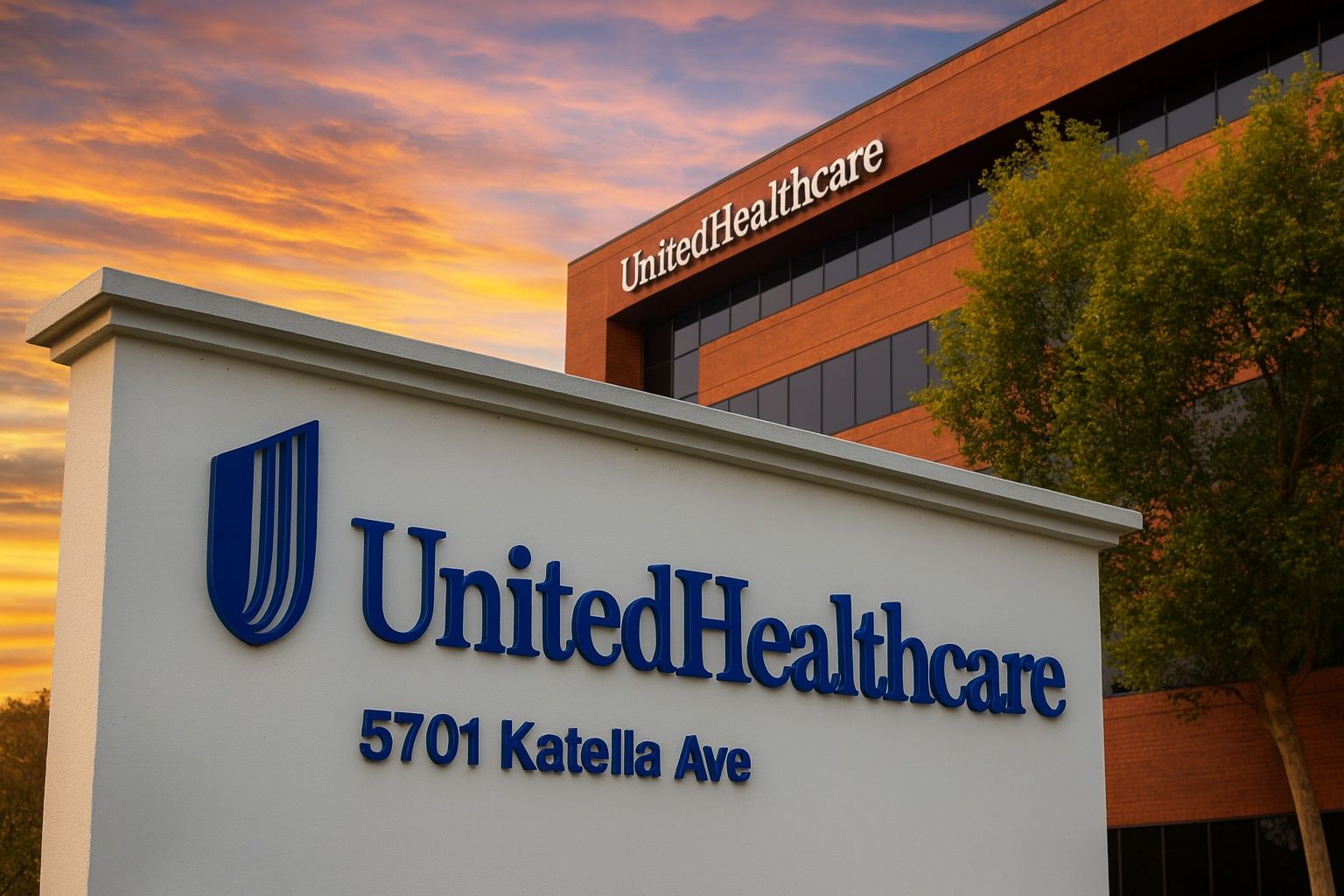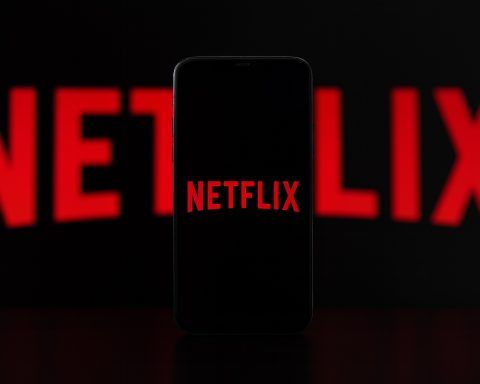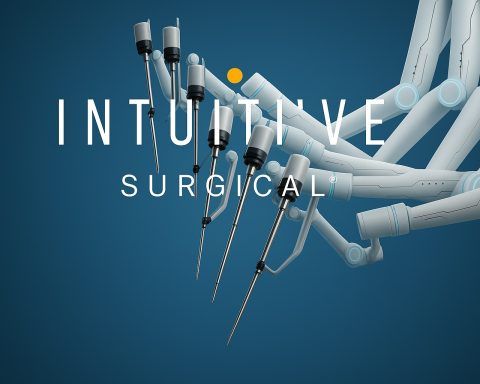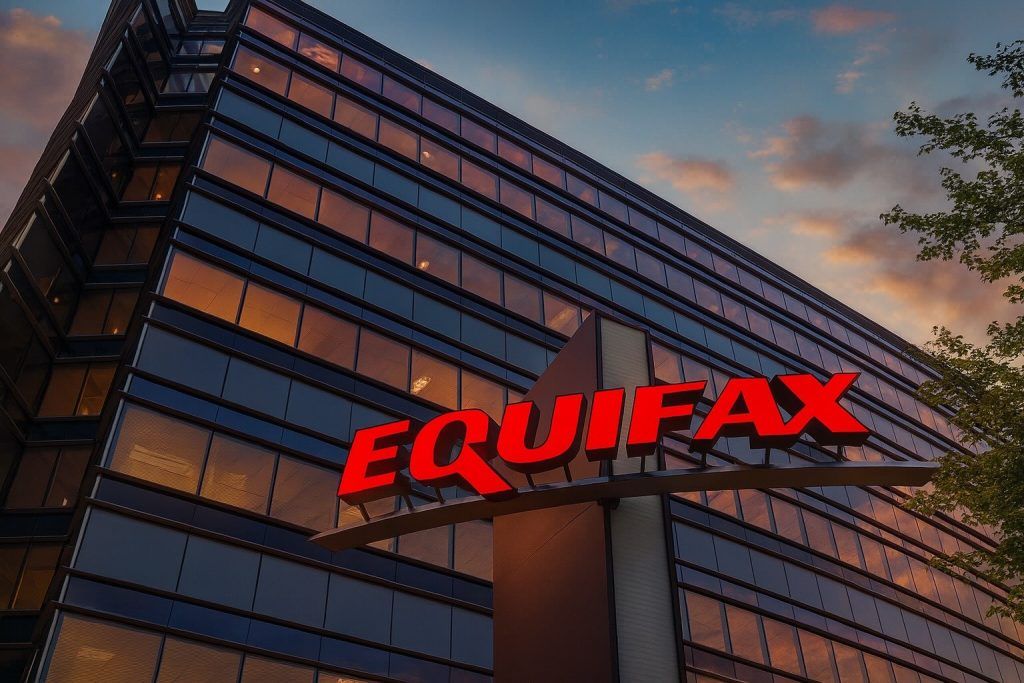- Current Price & Drop: UnitedHealth Group (NYSE: UNH) stock trades around $364 as of Oct. 21, 2025, after a 2.2% jump in yesterday’s session [1]. Even after a recent rebound, shares remain down roughly 30% year-to-date and sit far below their April 2025 peak near $630 (52-week range: $234.60–$630.73) [2]. Market capitalization hovers around $325 billion [3].
- Earnings Test Ahead: UnitedHealth will report Q3 2025 earnings on Oct. 28, and analysts expect a steep profit decline. The insurer slashed its full-year 2025 profit outlook from about $24.65 per share to ~$14.65 over the summer due to surging medical costs [4]. Wall Street is bracing for a double-digit earnings drop and volatile trading around the results as the company works through higher-than-expected claims usage [5] [6].
- Analysts Turn Optimistic: Despite this year’s troubles, several analysts have recently upgraded UNH. KeyBanc Capital Markets hiked its price target from $350 to $400 (Overweight rating) and Bernstein raised its target to $433 (Outperform) [7]. These calls join a wave of upgrades in September from Wells Fargo, Morgan Stanley, Truist, and Barclays – signaling renewed bullishness on UnitedHealth’s long-term prospects [8].
- Cost Cuts & Medicare Changes: UnitedHealth is retrenching in Medicare Advantage to cope with rising costs and funding cuts. It plans to exit 100+ Medicare Advantage plans across 109 U.S. counties in 2026 (impacting ~600,000 members) to stem losses in less-profitable markets [9] [10]. The insurer has faced regulatory scrutiny, including a federal fraud probe into its Medicare billing practices for risk adjustments [11]. Investors remain wary of ongoing medical cost inflation and potential policy changes that could squeeze margins.
- Leadership Shake-Up: 2025 has been a tumultuous year for UnitedHealth’s leadership. In May, the company suspended its financial forecast amid a shock earnings miss and CEO Andrew Witty abruptly resigned, citing personal reasons [12]. Longtime former CEO Stephen Hemsley returned to lead the company, vowing to “embark on a rigorous path back to being a high-performing company” and targeting a return to earnings growth by 2026 [13] [14]. Shares plunged nearly 18% to a four-year low on the news but have since partly recovered [15].
Stock Price Snapshot: October 2025 Rebound
UnitedHealth stock has seen volatile swings in 2025, but recent weeks brought a measure of relief. As of Oct. 21, shares trade around $364, up from the lows hit earlier in the year. On Monday (Oct. 20), UNH jumped +2.21% to close at $364.48 [16], recovering from a mid-month dip. Over the past week the stock oscillated in the mid-$350s to $360s, essentially flat to slightly higher overall [17].
Despite this stabilization, UnitedHealth remains deep in the red for 2025. The stock is still down roughly 30–35% year-to-date (depending on the reference point) [18], dramatically underperforming the broader market. The collapse earlier in the year leaves UNH about 40% below its 2025 highs – in April the stock traded above $630, versus the mid-$360s now [19]. This wide gap is reflected in the 52-week range of $234.60 to $630.73 [20], highlighting the severity of the sell-off.
Such a drawdown wiped out billions in market value, putting UnitedHealth’s market cap near $325 billion as of this week [21]. For context, UNH was the largest health insurer in the U.S. by revenue and membership coming into 2025, so its sharp decline has attracted significant attention. Notably, shares have bounced more than 10% off their late-summer lows [22], suggesting cautious optimism that the worst might be over. But whether this nascent rebound can continue will depend on upcoming catalysts – starting with the imminent earnings report.
Surging Costs Trigger Guidance Cut and CEO Exit
UnitedHealth’s troubles in 2025 began with surging medical costs that caught management and investors off guard. In the first half of the year, the company saw an “unexpected surge in medical care demand” – especially among Medicare Advantage members – which drove up claims expenses and eroded profit margins [23]. This culminated in UnitedHealth’s first earnings miss since 2008 in Q1 2025, a shocking turn for a company long known for steady growth [24].
The financial hit forced UnitedHealth to take drastic action. On April 17, 2025, management slashed the full-year earnings forecast and warned that medical utilization was far higher than anticipated, implying about a $6.5 billion overshoot in costs [25]. Then in May 2025, UnitedHealth made the unprecedented move of withdrawing its 2025 guidance entirely, citing the uncertainty around health care usage trends [26]. The news sent UNH shares plunging nearly 18% in a single day to their lowest level in four years [27], and it set off alarm bells across the health insurance industry.
At the same time, CEO Andrew Witty abruptly resigned (effective May 13, 2025) for “personal reasons,” in what many saw as an accountability moment for the company’s missteps [28] [29]. UnitedHealth’s board turned back to a familiar hand: Stephen J. Hemsley, the former chief executive who led UNH through 2017, was re-appointed as CEO to steer the ship [30]. Hemsley immediately struck a tone of urgency and resolve. “Many of the issues standing in the way of achieving our goals…are largely within our control,” he told investors, emphasizing that leadership would tighten execution and restore confidence [31]. He described the situation as a rigorous path back to high performance, projecting that UnitedHealth can resume earnings growth in 2026 once the current hurdles are managed [32] [33].
Under Hemsley’s renewed leadership, UnitedHealth moved to re-establish guidance with more conservative assumptions. By late July, alongside its Q2 results, the company reinstated a full-year 2025 outlook calling for net earnings of at least $14.65 per share (adjusted EPS ≥ $16.00) [34]. This was a dramatic cut from the roughly $24–$25 EPS guidance given previously, reflecting the hit from higher medical costs. UnitedHealth acknowledged it had underestimated utilization by about $6.5 billion – essentially admitting the earlier forecast was overly optimistic [35]. The revised guidance implies 2025 profits will be roughly 50% lower than what Wall Street expected just a year ago [36]. Not surprisingly, investors reacted with caution, though the clarity helped stabilize the stock over the summer.
Financially, the damage from the cost surge was evident in the second quarter numbers. Q2 2025 revenue grew ~13% to $111.6 billion, but net profit dropped 19% year-over-year to $3.4 billion [37]. UnitedHealth’s profit margin slid to just 3.1% (from about 4.3% a year prior) [38] – unusually thin for this business and a sign of the elevated medical loss ratio squeezing earnings. Quarterly GAAP EPS fell to $3.74, or $4.08 on an adjusted basis (missing analyst estimates) [39]. These results underscore how significantly the cost headwinds have dented profitability in 2025.
Medicare Advantage Changes and Regulatory Pressures
A major storyline for UnitedHealth – and the industry at large – has been the Medicare Advantage shake-up. UnitedHealth Group’s insurance arm (UnitedHealthcare) is the nation’s largest Medicare Advantage provider, so it is highly exposed to trends in that program. In 2025, two factors converged to create a profitability squeeze: rising healthcare utilization (more doctor visits, tests, and procedures by seniors) and cuts to Medicare payments mandated by the government [40] [41]. As a result, UnitedHealth announced it will stop offering Medicare Advantage plans in 109 counties starting in 2026, affecting about 180,000 to 200,000 members [42] [43]. According to an executive, “The combination of CMS funding cuts, rising healthcare costs and increased utilization have created headwinds that no organization can ignore.” [44].
In total, UnitedHealthcare plans to cease over 100 Medicare plans representing roughly 600,000 members, largely in certain PPO plans (which allow out-of-network coverage) that had become less profitable [45]. By exiting these lower-margin markets – many of them in rural areas – the company aims to stabilize its Medicare book and focus on plan designs that can be sustained under tighter reimbursement [46]. Most members in discontinued plans will have options to switch to other coverage (often HMOs with more managed care) during open enrollment. While cutting plans risks some membership losses, UnitedHealth is prioritizing margin over volume after learning the hard way that growth at all costs can backfire.
UnitedHealth’s challenges in Medicare have attracted regulatory and legal scrutiny as well. The U.S. Department of Justice and other agencies have been investigating the Medicare Advantage industry – including UnitedHealth – over allegations of “upcoding” diagnoses to inflate payments. In UnitedHealth’s case, a federal civil-fraud probe is examining whether its plans exaggerated patient conditions to garner higher reimbursements from Medicare [47]. This ongoing investigation, revealed in 2023 and continuing into 2025, hangs as a reputational risk over the company. UnitedHealth has said it is cooperating with authorities, and notably, no charges have been filed to date; but the scrutiny has added to investor unease. It also underscores why regulators are trimming payments: concerns that some insurers exploited the risk-adjustment formula to boost profits.
Furthermore, UnitedHealth is facing pressure from within its shareholder base on governance matters. In early October, a shareholder advocacy group proposed separating the CEO and chairman roles, arguing that an independent board chair could improve oversight [48]. This proposal came on the heels of UnitedHealth’s consecutive earnings misses and strategic missteps, reflecting shareholder frustration. While the board has not yet acted on this idea, it’s clear that investors want greater accountability after 2025’s stumbles. Any governance changes (or resistance to them) will be something to watch in the next proxy cycle.
Industry Factors and Competitor Comparisons
UnitedHealth’s turmoil has played out against a backdrop of turbulence for the entire managed-care sector. In mid-2025, after UnitedHealth’s warnings, many health insurance stocks sold off on fears that skyrocketing utilization rates would hit everyone’s earnings. However, it became apparent that some of UnitedHealth’s issues were company-specific. Rival insurers Humana (HUM) and Elevance Health (ELV), for example, reported that they had not seen unusually high medical cost growth in their own Medicare businesses [49]. Their medical cost ratios remained in line with expectations, suggesting that UnitedHealth may have miscalculated or mispriced its plans relative to peers. These disclosures helped those competitors’ stocks rebound and led analysts to conclude that UNH’s cost spike was not an industry-wide phenomenon [50]. In other words, UnitedHealth’s 2025 woes stemmed partly from its internal pricing and underwriting decisions, not just macro trends.
That said, sector-wide headwinds can’t be ignored. Medicare funding cuts are impacting all players to some degree. In fact, UnitedHealth is not alone in retrenching – Humana and CVS/Aetna have also signaled plans to exit certain low-margin Medicare markets ahead of 2026 [51]. The industry is essentially tightening its belt, focusing on counties and plan types where they can still earn acceptable profits under the new reimbursement formulas. This broad pullback indicates that the economics of Medicare Advantage have shifted; growth is slowing and insurers are becoming more selective to protect margins.
Investors are also monitoring the regulatory and political climate affecting health insurers. One recent positive catalyst: in early October, health-care stocks, including UNH, got a lift on speculation that the U.S. government might offer relief on Affordable Care Act subsidies or Medicare payments [52]. There are hopes that policymakers could strike deals to shore up insurance markets (especially with an election year approaching in 2026). Even a small policy adjustment or delay in planned cuts could materially help earnings, given the razor-thin margins right now. Conversely, ongoing debates over drug pricing and insurance practices (like denials of care or prior authorizations) pose longer-term risks to the sector’s profitability. The net effect is a mixed landscape: UnitedHealth and its peers are navigating both promising opportunities (e.g. an aging population driving demand) and persistent challenges (cost containment and regulatory scrutiny).
Outlook: Forecasts, Technicals, and What Experts Say
Going forward, the big question is whether UnitedHealth’s stock can sustain a comeback or if further disappointment lies ahead. On the fundamentals, some analysts argue the worst of the earnings hits may be temporary. They point out that UnitedHealth still boasts tremendous scale – serving ~51 million members – and a diversified business with its Optum health services segment balancing the insurance operations [53]. Revenue continues to grow (~10% year-over-year in the latest quarter) even as profits slipped [54]. Bulls also note that UNH shares now trade at a relatively modest valuation: around 15–16× trailing earnings and under 0.8× sales, with a ~2.4% dividend yield providing support [55]. By comparison, the average P/E in the healthcare sector is about 21×, so UnitedHealth looks cheap relative to many peers [56]. In fact, one detailed valuation analysis estimated UNH’s intrinsic fair value around $853.86 per share, well more than double the current market price [57]. That model (based on discounted cash flows) suggests the stock is over 50% undervalued if UnitedHealth can eventually return to its normal growth trajectory [58].
Wall Street’s consensus view, however, remains cautious. The average analyst rating on UNH is between “Hold” and a weak “Buy,” and the average 12-month price target is roughly $365–$370 – basically in line with the present stock price [59]. In other words, most analysts aren’t forecasting a big near-term rally from here; they’re taking a “wait-and-see” approach after this year’s resets. UnitedHealth’s management also tempered expectations: the company explicitly guided that earnings will likely resume growth in 2026, not in the back half of 2025 [60]. So any turnaround could take a few quarters of patience. “UnitedHealth Group has embarked on a rigorous path back to being a high-performing company…positioning us for growth in 2026 and beyond,” CEO Hemsley stated, emphasizing a focus on operational discipline [61].
On the technical analysis front, UnitedHealth’s chart has shown some encouraging signs since early autumn. In early October, as the stock climbed into the $370s, momentum indicators flipped bullish – the 14-day Relative Strength Index (RSI) broke above 70, indicating strong upward momentum (albeit an overbought condition) [62]. UNH shares also rose back above their 50-day and 200-day moving averages (around $311 and $352 respectively at the time) [63], which traders view as a positive trend signal. Most short- and long-term moving average indicators were flashing “buy” as of mid-October [64]. This suggests that from a purely market-action perspective, sentiment has improved significantly compared to the summer doldrums. That said, any negative surprise – for instance, a weak Q3 earnings result or downbeat guidance tweak – could quickly reverse that momentum.
Industry experts are mixed in their commentary. KeyBanc’s Matthew Gillmor argues that UnitedHealth’s size and diversification (spanning employer insurance, Medicare/Medicaid, and the Optum health services unit) should allow it to weather the storm and eventually command a higher valuation [65]. In raising his price target to $400, Gillmor signaled confidence that the current fears are overdone. Bernstein’s Lance Wilkes is even more upbeat, lifting his target to $433 and noting that UnitedHealth “remains one of the largest private health insurers with ~51 million members worldwide,” implying it can leverage that scale for a comeback [66] [67]. Several other analysts (Wells Fargo, Morgan Stanley, Truist, Barclays) have likewise highlighted UnitedHealth’s resilience and long-term growth potential despite 2025’s setbacks [68].
Not all observers are convinced, however. Analysts at Mizuho have pointed out that even before this year’s blowup, UnitedHealth’s initial 2025 outlook was more conservative than many expected – a sign management saw storm clouds on the horizon [69]. The fact that guidance had to be cut from ~$24 EPS down to ~$16 confirms that uncertainty in health utilization and Medicare funding remains high [70]. Until those trends normalize (or insurers raise premiums sufficiently), earnings could stay under pressure. Some analysts warn that medical cost inflation – including expensive new weight-loss drugs and pent-up demand for care – may continue into 2026. On the other hand, healthcare policy experts note that insurers have the ability to reprice premiums annually, and under the Affordable Care Act rules they must adjust premiums if medical loss ratios get too high [71]. Indeed, one analysis suggested UnitedHealth’s profits could rebound by 2027 once premium increases catch up to cover the higher claims costs [72]. This implies that the current downturn, while painful, might be a cyclical issue rather than a permanent impairment of the business model.
Bottom Line: UnitedHealth Group’s stock is at a crossroads. The company has endured a rare slump in 2025 due to a confluence of missteps and macro pressures – from underestimating seniors’ healthcare usage to facing reimbursement cuts and tragedy in its leadership ranks. The result was a dramatic reset of earnings and investor expectations, reflected in UNH’s roughly one-third drop in share price over the year. Yet with that reset comes the potential for a phoenix-like recovery if UnitedHealth can execute its turnaround plan. The upcoming Q3 earnings report on Oct. 28 will be a crucial litmus test of whether the worst is truly in the rearview mirror. In the meantime, the stock’s modest valuation and recent uptick have attracted bargain hunters, while skeptics remain on guard for further surprises. For now, UnitedHealth’s story in late 2025 is one of a healthcare giant battered but not broken – and Wall Street will be watching closely to see if this fallen blue chip can regain its old strength in the year ahead.
Sources: UnitedHealth and industry press releases, Reuters, Yahoo Finance, TS2.Tech (TechStock²) news analysis [73] [74] [75] [76] [77], and other financial media.
References
1. www.investing.com, 2. ts2.tech, 3. ts2.tech, 4. ts2.tech, 5. ts2.tech, 6. ts2.tech, 7. ts2.tech, 8. ts2.tech, 9. www.reuters.com, 10. www.reuters.com, 11. ts2.tech, 12. www.reuters.com, 13. www.unitedhealthgroup.com, 14. www.unitedhealthgroup.com, 15. www.reuters.com, 16. www.investing.com, 17. www.investing.com, 18. ts2.tech, 19. ts2.tech, 20. ts2.tech, 21. ts2.tech, 22. ts2.tech, 23. www.reuters.com, 24. www.reuters.com, 25. ts2.tech, 26. www.reuters.com, 27. www.reuters.com, 28. www.reuters.com, 29. www.reuters.com, 30. www.reuters.com, 31. www.reuters.com, 32. www.unitedhealthgroup.com, 33. www.unitedhealthgroup.com, 34. www.unitedhealthgroup.com, 35. ts2.tech, 36. ts2.tech, 37. finance.yahoo.com, 38. finance.yahoo.com, 39. healthworksai.com, 40. www.reuters.com, 41. www.reuters.com, 42. www.reuters.com, 43. www.reuters.com, 44. www.reuters.com, 45. www.reuters.com, 46. www.reuters.com, 47. ts2.tech, 48. ts2.tech, 49. www.reuters.com, 50. www.reuters.com, 51. ts2.tech, 52. ts2.tech, 53. ts2.tech, 54. ts2.tech, 55. ts2.tech, 56. simplywall.st, 57. simplywall.st, 58. simplywall.st, 59. ts2.tech, 60. www.unitedhealthgroup.com, 61. www.unitedhealthgroup.com, 62. ts2.tech, 63. ts2.tech, 64. ts2.tech, 65. ts2.tech, 66. ts2.tech, 67. ts2.tech, 68. ts2.tech, 69. ts2.tech, 70. ts2.tech, 71. ts2.tech, 72. ts2.tech, 73. www.reuters.com, 74. www.reuters.com, 75. ts2.tech, 76. ts2.tech, 77. www.unitedhealthgroup.com





